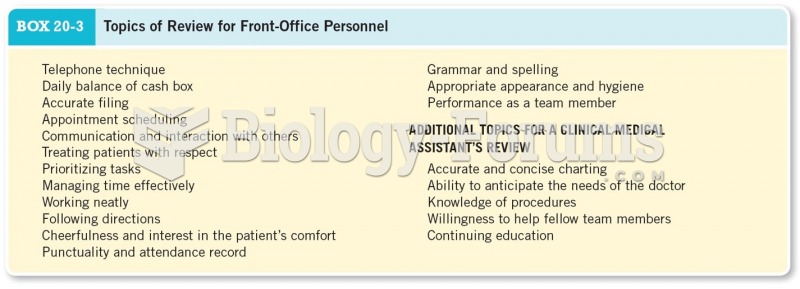|
|
|
Eat fiber! A diet high in fiber can help lower cholesterol levels by as much as 10%.
Many of the drugs used by neuroscientists are derived from toxic plants and venomous animals (such as snakes, spiders, snails, and puffer fish).
The first oral chemotherapy drug for colon cancer was approved by FDA in 2001.
Cancer has been around as long as humankind, but only in the second half of the twentieth century did the number of cancer cases explode.
GI conditions that will keep you out of the U.S. armed services include ulcers, varices, fistulas, esophagitis, gastritis, congenital abnormalities, inflammatory bowel disease, enteritis, colitis, proctitis, duodenal diverticula, malabsorption syndromes, hepatitis, cirrhosis, cysts, abscesses, pancreatitis, polyps, certain hemorrhoids, splenomegaly, hernias, recent abdominal surgery, GI bypass or stomach stapling, and artificial GI openings.







